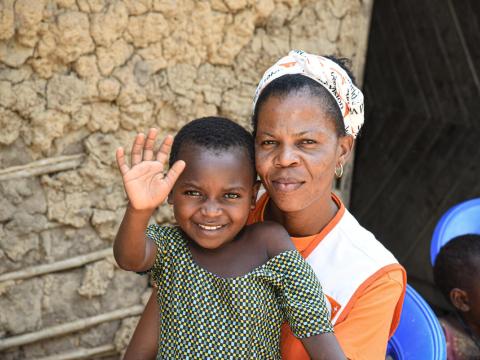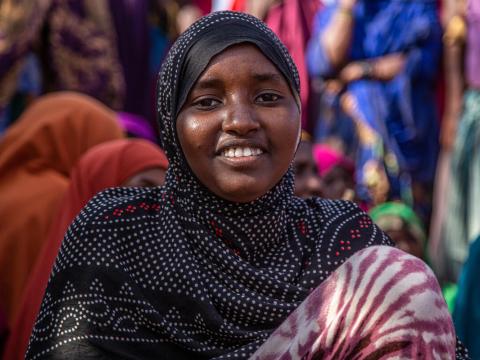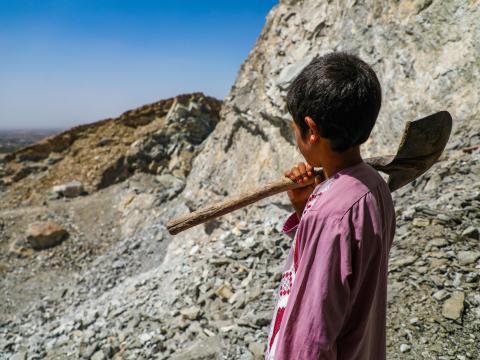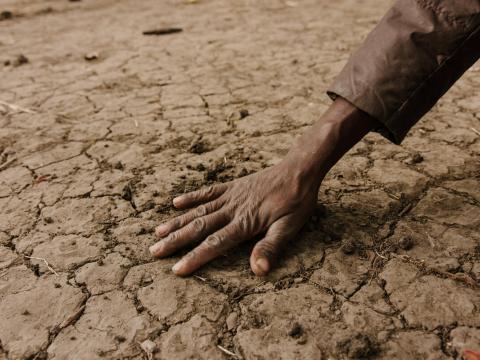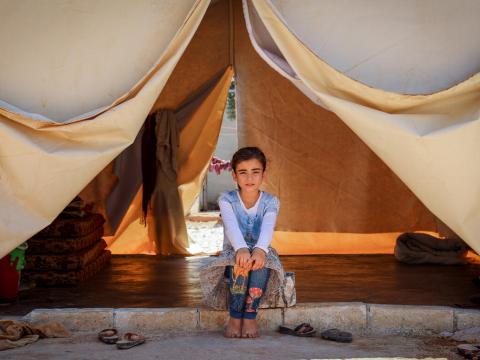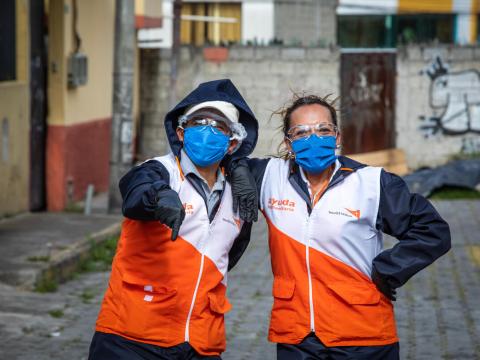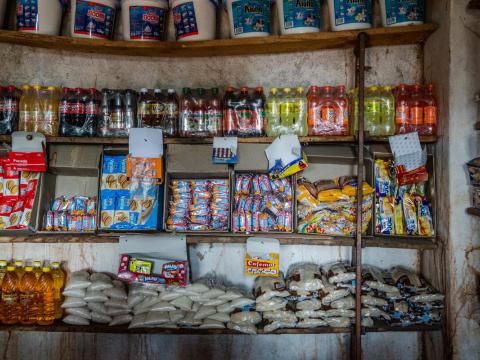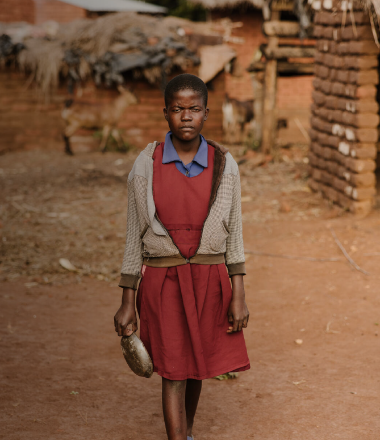
Ending child hunger and malnutrition
In a world of plenty…
How hunger and malnutrition are affecting children across the globe
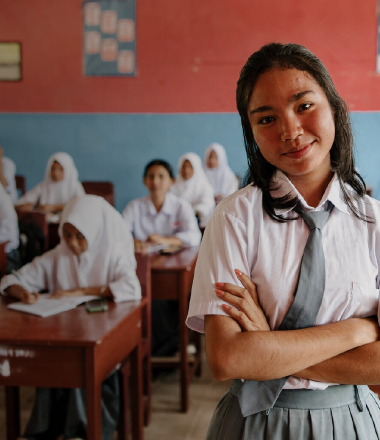
Hunger is one of the driving forces for child marriage
READ TASYA’S STORYFAQs about hunger and malnutrition
Why is world hunger still a problem?
Millions of children are going without food every single day due to conflict, climate change, the lingering indirect impacts of the COVID-19 pandemic, and rising costs.
In 2022, governments, civil society, the private sector, donors, international organisations, and academia made numerous commitments and financial promises to improve nutrition but have consistently neglected to provide the necessary funding or follow through.
Climate change devastates communities, destroying crops and incomes through droughts, floods, extreme storms, and unpredictable weather. Conflict and violence are compounding existing crises. An uneven socioeconomic recovery and the lasting indirect impacts from the COVID-19 pandemic, as well as the war in Ukraine, have led to higher prices for food and other essentials, forcing already vulnerable families into impossible choices between food and medicine, school supplies, or even a place to live.
Nutrition has been historically underfunded, and governments have neglected to make it a priority. Undernutrition underlies nearly half of all deaths of children under age 5. Hundreds of millions of children suffer from curable diseases, are underweight, stunted, wasted, anaemic, and overweight.
Broken food systems continue to make matters worse. Right now, the world produces around 8 billion tonnes of food per year, enough to nourish every girl, boy, woman, and man on the planet. But each year, 14-15 % of food, worth US$370-400 billion, is lost before it can be consumed (between harvest and retail). This is simply untenable in a world where 2.4 billion people do not have enough to eat.
Unjust supply chains for the food and beverage industry, particularly in the agricultural sector, further increase child hunger. Food and beverage producers continue to work with suppliers that keep smallholder farmers and their families in poverty due to unfair market prices, forcing families to adopt negative coping strategies that affect their children, such as child labour, begging, violence or exploitation, dropping out of school, and child marriage.
How can malnutrition be prevented?
Our solutions are not limited to treatment. Thanks to our early prevention packages, we saw a 50% prevention rate of acute malnutrition cases at a low cost, reduced stunting, reduced maternal and child anaemia, increased household food security, improved diets, and children achieving higher language and motor milestones. These packages include: food rations, social and behavioural change through the Care Group approach (exclusive breast-feeding, weaning, and household hygiene), and strengthened health systems.
We have simplified ways to help children, like building the capacity of community health workers, teaching caregivers how to recognise the signs of undernutrition, and training mothers and caregivers on infant and young child feeding best practices.
However, we know that only 1 in 5 children who require life-saving treatment for wasting receive it. We have affordable and scalable solutions that can address malnutrition where children are already facing undernutrition and related health issues. Our community-based management of acute malnutrition (CMAM) is highly cost-effective for children who become wasted. It empowers communities to both identify and treat malnourished children.
Is world hunger an environmental issue?
Climate change is one of the four main factors – next to conflict, cost inflation, and COVID-19 – perpetuating the global hunger crisis. It causes problems like droughts, floods, storms, and unpredictable weather patterns. These climate shocks destroy crops or stop them from growing altogether. Access to clean water is disrupted, irrigation systems dry up, and food production is at a standstill; families cannot grow crops, care for their livestock, or generate an income. Without clean water, entire communities go hungry.
Children are at heightened risk when there is not enough water. Over 160 million children are living in areas of high-level drought and over 2 billion people live in countries where water supply is inadequate. Not only does this affect their access to nutritious food, but it has lasting impacts on their overall health, education, and long-term development.
The availability of clean water is just as essential to children suffering from malnutrition as food assistance. Children are often the victims of water-borne diseases (e.g. diarrhoea and Cholera), which prevent the body from absorbing and using vital nutrients, even when enough food is available. Inadequate access to clean water, sanitation, and hygiene is estimated to account for around 50% of global malnutrition.
Are hunger and malnutrition the same thing?
Hunger and malnutrition are related but are two distinct things. Hunger is the distress associated with lack of food. Malnutrition refers to deficiencies, excesses, or imbalances in a person’s energy and/or nutrients intake – it refers to both undernutrition and overnutrition. There are three forms of malnutrition: Undernutrition (with 3 forms – wasting, stunting, underweight); Micronutrient deficiencies (or vitamin and mineral deficiencies); and Overweight (including obesity and diet-related non-communicable diseases).
Children may be malnourished without the physical signs of hunger, but this is still harmful and can be dangerous to children. Malnutrition especially affects families that cannot afford nutritious foods or access to health care. Hunger can be staved off with unhealthy foods, but having enough nutritious food is critical for a young child’s physical growth and brain development. As children grow, nutritious food also protects them from common illnesses and provides them with the fuel to learn.
Unhealthy foods, such as ultra-processed foods high in sugar, salt and unhealthy fats, along with sugar-sweetened beverages, can lead to malnutrition including the following conditions: micronutrient deficiencies, overweight (high weight-for-height), obesity (a severe form of overweight), and diet-related non-communicable diseases (e.g. diabetes, hypertension).
Are malnutrition and starvation the same thing?
No, they are not the same thing. Starvation is extreme suffering or death, caused by a prolonged lack of food. Malnutrition happens when children experience deficiencies, excesses or imbalances in nutrient intake or when their bodies’ ability to utilise the nutrients is impaired. The most common causes of malnutrition are inadequate diet or disease (e.g. severe or repeated bouts of infection).
The most severe form of undernutrition is known as severe wasting, it is the most visible form of malnutrition, typified by a frail, skeletal child with very low weight for their height and severe muscle wasting. It requires urgent treatment to survive. Children suffering from this may also have nutritional oedema – characterised by swollen feet, face, and limbs. If left untreated, severe acute malnutrition can cause lasting or irreversible damage, including organ damage and death.
Currently, 35 million people are on the edge of starvation in at least 39 countries worldwide. This hunger crisis is unprecedented in modern times, affecting countries in Africa, Latin America, the Middle East and Eastern Europe, Asia, and the Pacific. More than half (214,100) of the people enduring famine-like conditions were in Somalia, but 87,000 people in South Sudan, 31,000 in Yemen, 20,300 in Afghanistan, 19,200 in Haiti, 3,000 in Nigeria, and 1,800 in Burkina Faso also lived in these extreme conditions. Those remaining are on the cusp of starvation.
What is wasting?
Wasting, also known as ‘acute malnutrition’, affects an estimated 45 million children under age 5. Wasting is a child who is too thin for their height. It occurs as a result of recent rapid weight loss or a failure to gain weight, often due to insufficient food intake or illness. There are different levels of severity – from moderate to severe acute malnutrition.
Only 1 in 5 children receive the necessary treatment, leading to the deaths of 1 million children every year.
What is stunting?
Stunting refers to a child who is too short for their age because of chronic undernutrition, especially during the first 1,000 days between conception and the age of 2. It is a marker for chronic malnutrition and the best predictor of a person’s overall economic potential within society.
More than 148 million children under age 5 were affected by stunting in 2022.
Where is malnutrition most common?
Child malnutrition is universal – it just looks different in different contexts. Children in rural areas and low-income families, with mothers with lower levels of education, have a higher likelihood of experiencing stunting or malnutrition. Meanwhile, kids in cities and wealthier families tend to be more likely to be overweight. Few countries are close to reaching targets related to childhood stunting, overweight, anaemia, low birth weight, and wasting.
How can famine be prevented?
The term famine has a specific technical meaning; however, ‘famine-like’ or ‘catastrophic’ conditions can exist in locations within countries. These conditions are often predictable and preventable. The world has systems to detect famine-like conditions and tools to prevent them by acting quickly.
Families are struggling to get enough to eat – 258 million people faced extreme hunger in 2022. Children are going hungry and becoming acutely malnourished. Two out of three girls and women suffer from micronutrient deficiencies. Child hunger levels are the worst they’ve been in generations because of climate change, conflict, the long-lasting impacts of the COVID-19 pandemic, and cost inflation. We’ve had ENOUGH.
Humanitarian aid alone is not sufficient. We must work collaboratively and intentionally across the humanitarian, development, and peacebuilding nexus to effectively use anticipatory action and social safety nets. Together we can prepare for and mitigate climate hazards while building communities’ resilience to these cyclical shocks that push people into these catastrophic conditions.
Early warnings should become the catalyst for action. There is still a window of opportunity to save hundreds of thousands of lives. The international community must act now to alter the trajectory of these crises.
We believe it takes a comprehensive approach to prevent famine, hunger, and malnutrition. We need interventions that not only save lives in the immediate term but also address the root causes of the problems. We want to increase awareness to advocate for changes in policies. We must address unjust and inequitable food systems. Community health infrastructures need strengthening. We want to build community resilience and sustainable livelihoods, promote climate-smart agricultural practices, and ensure that children, who are often the most affected in these crises, continue to have access to education and are protected from violence.
The food crisis affects everyone
Hunger and malnutrition are universal; they just look different in different contexts. We can name hunger hotspots, but find child hunger everywhere. No country hits all of the global nutrition targets for children.
There is an urgency where children are lacking the minimum caloric intake. In areas affected by conflict, droughts, or refugee crises, women and girls suffer the most when children don't have enough food.
There is also an urgency where children are exceeding their caloric intake. Poor quality foods don’t give their bodies and brains the building blocks they actually need.
If not addressed, these hunger issues are passed from one generation to the next, creating a perpetual cycle of disadvantage and health issues.
Let’s stand with all children – no matter where they are from – to ensure they have ENOUGH of the right foods to thrive.
